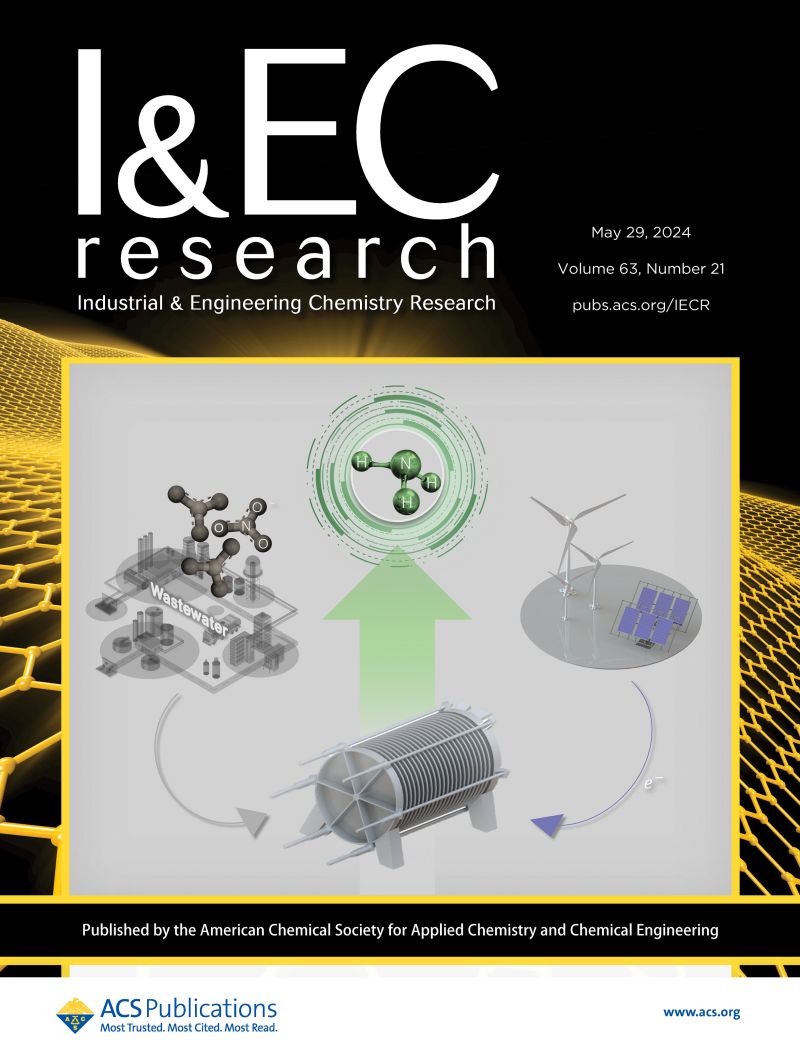电纺丝纳米膜辅助酯交换制备生物柴油
IF 3.9
3区 工程技术
Q2 ENGINEERING, CHEMICAL
引用次数: 0
摘要
本研究考察了纳米膜反应器在以菜籽油为原料生产生物柴油的碱催化剂酯交换过程中的作用。利用聚偏氟乙烯和偏氟乙烯与四氟乙烯共聚物制备了多孔电纺丝纳米膜。聚合物膜的结构允许它被动过滤生产的粗生物柴油,同时保留甘油和副产品。脂肪酸甲酯(FAME)含量最高可达99%左右,重现性高,理想的酯交换条件为65℃,甲醇/油质量比为4:1,反应时间为65 min。所制得的FAME满足en14214的关键要求。经过4个制备循环后,产物流中没有甘油,说明纳米膜可以在反应介质中保持甘油。本文章由计算机程序翻译,如有差异,请以英文原文为准。
Electrospun Nanomembrane-Assisted Transesterification for Biodiesel Production
The study examines how well a nanomembrane reactor functions in the base catalyst transesterification process to produce biodiesel with rapeseed oil as the feedstock. The fabrication of a porous electrospun nanomembrane was achieved through the utilization of poly(vinylidene fluoride) and a copolymer of vinylidene fluoride with tetrafluoroethylene. The polymeric membrane’s structure allowed it to passively filter the crude biodiesel produced while retaining the glycerol and byproducts. With the maximum fatty acid methyl esters (FAME) content of about 99% and high reproducibility, the ideal transesterification conditions were found at 65 °C and a 4:1 methanol/oil weight ratio for 65 min. The FAME produced satisfied the key requirements of EN 14214. After four preparation cycles, there was no glycerol in the product stream, indicating that the nanomembrane could hold the glycerol in the reaction medium.
求助全文
通过发布文献求助,成功后即可免费获取论文全文。
去求助
来源期刊

Industrial & Engineering Chemistry Research
工程技术-工程:化工
CiteScore
7.40
自引率
7.10%
发文量
1467
审稿时长
2.8 months
期刊介绍:
ndustrial & Engineering Chemistry, with variations in title and format, has been published since 1909 by the American Chemical Society. Industrial & Engineering Chemistry Research is a weekly publication that reports industrial and academic research in the broad fields of applied chemistry and chemical engineering with special focus on fundamentals, processes, and products.
 求助内容:
求助内容: 应助结果提醒方式:
应助结果提醒方式:


